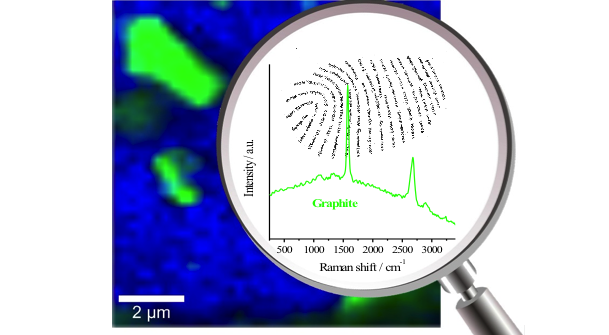

Raman spectroscopy is one of the fastest growing and most diverse applications in all of laser spectroscopy. As a result, it can be rather challenging at times to sift through the wide-ranging laser options all being marketed for Raman spectroscopy. In this application note we will tackle one of the most common questions that arises when picking a laser for Raman spectroscopy; “Should I chose a single-spatial mode or multi-spatial mode laser for my application?” On the surface, this seems like a simple question since Raman is a nonlinear optical effect and therefore the tighter the beam can be focused the higher the conversion efficiency. Seemingly a single-mode laser would be preferable, but in practice there are other factors that can complicate the situation.
What’s the difference between multi-mode vs single-mode lasers for Raman spectroscopy?
The first question you should ask yourself when considering which type of laser to choose is whether you are doing microscopy or bulk sampling. If the answer to that question is microscopy, then you immediately should go with a single mode laser. Since the goal of any microscopy system is to produce the highest resolution image possible, the number one consideration should be how tightly can the laser beam be focused down. In optics, the M2 of a laser determines how small of a spot size can be achieved for a given microscope objective with an M2 of 1 being the best possible focus. Even though a perfect M2 of 1 can never be physically achieved, open beam single mode diode lasers can typically have a M2 < 1.5 and single mode fiber-coupled diode lasers have an M2 »1.05.
Browse Our Laser Diode SelectionOn the other hand, if you are performing bulk sampling the question becomes a bit more complicated. If you are looking to measure non-absorbing, highly uniform samples, with smooth surface texture, and an amorphous structure, such as a liquid or a fine powder then single mode lasers are still a good choice. While this may seem like an overly specific example, it’s actually fairly common for many educational and “fit-for-purpose” applications.
The most obvious disadvantage of a small spot size on the sample is when the sample is heterogenous. In this case, you may end up missing the particular molecule of interest in the sample because the spot size is too small, as shown in the illustration, courtesy of Metrohm Raman. This also can result in low sample to sample repeatability, since in a bulk application there is typically minimal control over the positioning of the laser spot on the sample. It should be noted that this issue can be overcome by raster scanning the laser spot over the sample, but this adds to the overall system complexity. In order raster scan you need to add extra hardware and software that support this capability. The structure of the sample’s surface can also lead to similar issues, particularly in surface enhanced Raman spectroscopy (SERS), but a full analysis of this process is beyond the scope of the application note.
It’s important to note that when performing bulk sampling of absorbing samples (for example dark or colored samples), the high-power density associated with the single-mode laser, is far more likely to damage the sample than a larger multi-mode spot, even at much lower average power levels.
The final and perhaps least obvious consideration is the samples crystallinity. Crystallinity is a measure of how structured the atoms of molecules in a solid are ordered. This is important because like all nonlinear effects, Raman scattering is polarization dependent, and if the sample is highly crystalline then the orientation of the sample relative to the laser’s polarization will affect the resultant Raman spectrum. While always present, this effect is not noticeable in amorphous samples, because the random orientation of the atoms and molecules in the samples causes these variations to be averaged out. Similarly, if the laser is randomly polarized then, the same averaging effect takes place, only by the laser’s random polarization as opposed to the sample’s random orientation. For this reason, when analyzing crystalline materials, it is necessary to first ask the question, “Am I looking to analyze the crystalline structure, or identify the material?” If the goal of your application is to study the crystalline structure, then single-mode lasers are generally preferable, due to the high polarization extension ratio. On the contrary, if your goal is to repeatedly identify the material (for example is this crystal methamphetamine or rock candy), then a fiber-coupled multi-mode diode laser would be the best option due to its highly random polarization.
RPMC offers a wide range of single-mode and multi-mode volume Bragg grating (VBG) external cavity diode lasers, which are ideal for Raman spectroscopy.
Talk to one of our knowledgeable Product Managers today by emailing us at [email protected] or Contact Us with the button below!
Have questions?

 BUY NOW
BUY NOW 